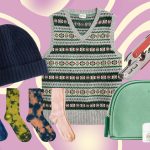Ryan Forsyth, a designer at Crocs, decided to really dive into coffee at the onset of COVID, and shortly thereafter started taking notes on the coffees he was brewing and posting them on Instagram under the moniker Quiet Mountain Cafe. An avid outdoorsman, Forsyth has created a very barebones coffee setup: a plastic V60 dripper for pour-overs, one of his Quiet Mountain Cafe-branded mugs, and a hand grinder that’s useful at home and in the great outdoors.
Forsyth loves his plastic V60 for its durability and adaptability. It clips alongside his mugs on a backpack, so it’s ready for fireside brewing.
Similar to a VSSL Java, the JX Pro manual grinder Forsyth uses is a splurge that he says is well worth the money. He explains, “It’s consistent and on par or better than some of the more expensive hand grinders out there.”
This wildcard Cafelat Robot doesn’t have Forsyth’s stamp of approval for making coffee on the go, but he says his at-home coffee setup wouldn’t be complete without it: “I’d been researching these and the Flair 57, and for less money, (the Robot) seemed to be just as good.” Plus, its kitschy, Space Age design really sold him.
Forsyth stocks these lightweight, durable mugs at Quiet Mountain Cafe’s website, which he notes are most often found in hospitals and patient care facilities but have become a cult favorite amongst outdoorsy types.
Michel Oscar Monegro, Founder of La Obra
Courtesy of Michel Oscar Monegro
Monegro has plenty of childhood memories of him surrounded by the sounds and smells of Moka pots brewed with cinnamon: “It’s sentimental,” he says. “The bubbling is so satisfying, like it’s purring (…) it adds a layer of therapy.” This inspired the La Obra Brew Bar, a kitchen annex of his photo studio. But despite his Moka pot being on standby at home, in Michael’s at-home “Brew Bar” he usually turns to a swanky La Marzocco Linea Mini for his daily morning espressos.
“I knew I wanted a La Marzocco (because) it’s the standard if you want something world class,” Monegro says. The Mini sits atop his hand-built wooden bar, and he brews espresso from a variety of roasters at his choosing. (And for those who don’t know where to buy coffee beans, we have a few coffee subscription services that’ll take the guesswork out of it.) Monegro loves its look and knows it lends credibility, even if it’s a machine built for the kitchen: “It has a substantive presence; it’s a modern classic,” he says.
Seamlessly incorporated in the drip tray of the Mini is the Acaia Lunar, a perfect espresso scale made of water-resistant anodized aluminum. Of the drip tray modification, Monegro gushes, “Little details like this make it so enjoyable.” He loves that its constant presence practically guarantees the use of the scale, meaning he can brew precisely extracted espressos and all of the integral elements have their place.
Monegro also uses a souped-up grinder, the Lux D, which is a refined yet robust coffee grinder that specializes in pulverizing beans super finely and uniformly for espresso. As the commercial market speeds headlong toward automation with high volume in mind, this La Marzocco home grinder keep things traditional, and Monegro appreciates that: “Some might see weaknesses, but on the other side it means you take your time.”
Many cafes tend to use a Puqpress—a $1,400 automatic coffee tamper—for extracting rich coffee flavors from coffee grounds, but Monegro prefers something more “intimate” and tactile that allows him to use his hands. He says his Saint Anthony Industries tamper and distribution tools ad are for the person who views coffee brewing, in all of its steps, as an art. You can adjust this tamp so that it produces the same puck (or, a compressed dose of coffee) every shot, just short of having a machine doing the work for you. “I like being able to touch everything,” he professes. “These keep traditions. (The New Levy tamp) is automatic, but you’re still being physical.”
Tony Boneta, Founder of After Hours
Courtesy of Tony Boneta



